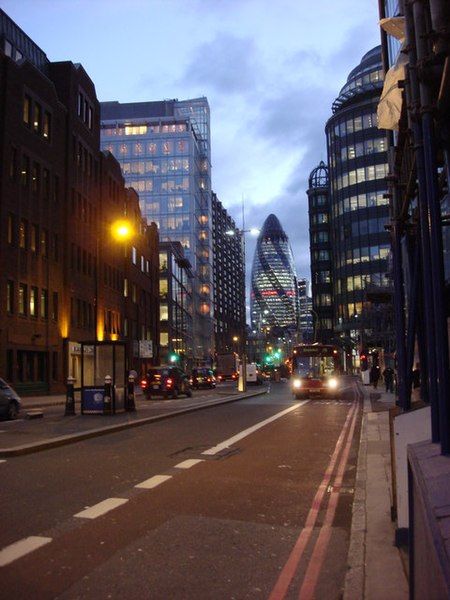St Botolph-without-Bishopsgate
St Botolph-without-Bishopsgate is a Church of England church in the Bishopsgate Without area of the City of London, and also, by virtue of lying outside the city's eastern walls, part of London's East End.
Exterior from Bishopsgate
View of the church from the southwest
Interior of the church
The font
Bishopsgate was one of the eastern gates in London's former defensive wall. The gate's name is traditionally attributed to Earconwald, who was Bishop of London in the 7th century. It was first built in Roman times and marked the beginning of Ermine Street, the ancient road running from London to York (Eboracum). The gate was rebuilt twice in the 15th and 18th centuries, but was permanently demolished in 1760.
St Erkenwald, Saxon Prince, bishop and saint known as the "Light of London": Bishopsgate is thought to be named after him, and he is understood to have restored the gate
St Botolph-without-Bishopsgate lay immediately north of the original Bishopsgate, and of the defensive ditch around London's Wall.
The frontage of Paul Pindar's house on Bishopgate is preserved in the Victoria and Albert Museum.
Looking south from Norton Folgate down Bishopsgate








